eCommerce websites need a platform to support the selling process. Some suppose there’s a heated Shopify vs Magento 2 battle, but there’s already a clear victor: Shopify.
Though Magento has dominated the market for years, it’s far too outdated to hold up. Shopify, the up-and-coming SaaS competitor, offers so many services at such a competitive price that even Magento 2 stands no chance. Here’s why merchants have been switching, and why they will continue to switch to Shopify.
Shopify vs Magento 2: Basics
Shopify and Magento 2 are both eCommerce platforms, but they go about their jobs a bit differently. On one hand, Shopify is a Software as a Service (SaaS) company, meaning they handle the tech while the merchant works with the sales. Magento, on the other hand, is an open-source platform, meaning the code is available to everyone for free. For these reasons, they both work a little differently.
The bare-bones
At their very core, Shopify and Magento 2 enable merchants to sell stuff on their website, but there’s a bit of a core difference.
Shopify’s focus is getting the store running fast. Customers look at the products, click the one they want, and check out.

The listings are pretty easy to customize. Merchants can use code or a drag-and-drop builder to tweak the look and feel until each listing looks just right.

Of course, Shopify has way more features than just listings. But at its core, it’s a platform for selling stuff fast.
Magento 2 is more about exactitude. It’s harder to strip down to its bare bones, but since it’s open-source, developers can basically do whatever they want with it.
There are plenty of pretty nice editors that give merchants lots of control, but most of the leg-work requires some coding.

Both Magento 2 and Shopify are eCommerce platforms, and neither one is really “better” at listing products. Shopify may be a bit quicker and Magento 2 may be a bit more customizable, but they both get the job done fast and give merchants lots of freedom. It’s more important to choose the platform that feels right, and much of that decision boils down to the interface.
Interface
Why should merchants build with an eCommerce platform? Because it gives them lots of control on the backend.
Magento 2 and Shopify are no exception. Each platform comes with a great backend panel with a unique interface.
Shopify’s backend interface is comfortable but powerful. It gives great previews of your analytics, listings, and sales, and everything merchants could possibly need is only a few clicks away.

The learning curve is very shallow since the whole backend was built to be easily searchable. Just click the bar, search a term, and watch related results pop up — all pre-sorted.
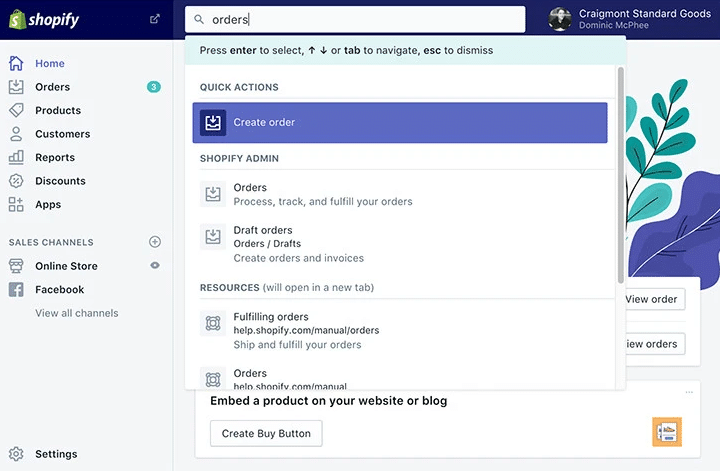
This backend interface is pretty, comfy, and handy. What’s not to love?
Magento’s panel isn’t as colorful or spacious, but it gets the job done. It’s set up similar to WordPress, where the content is displayed in the center and the categories are displayed on a dark sidebar.
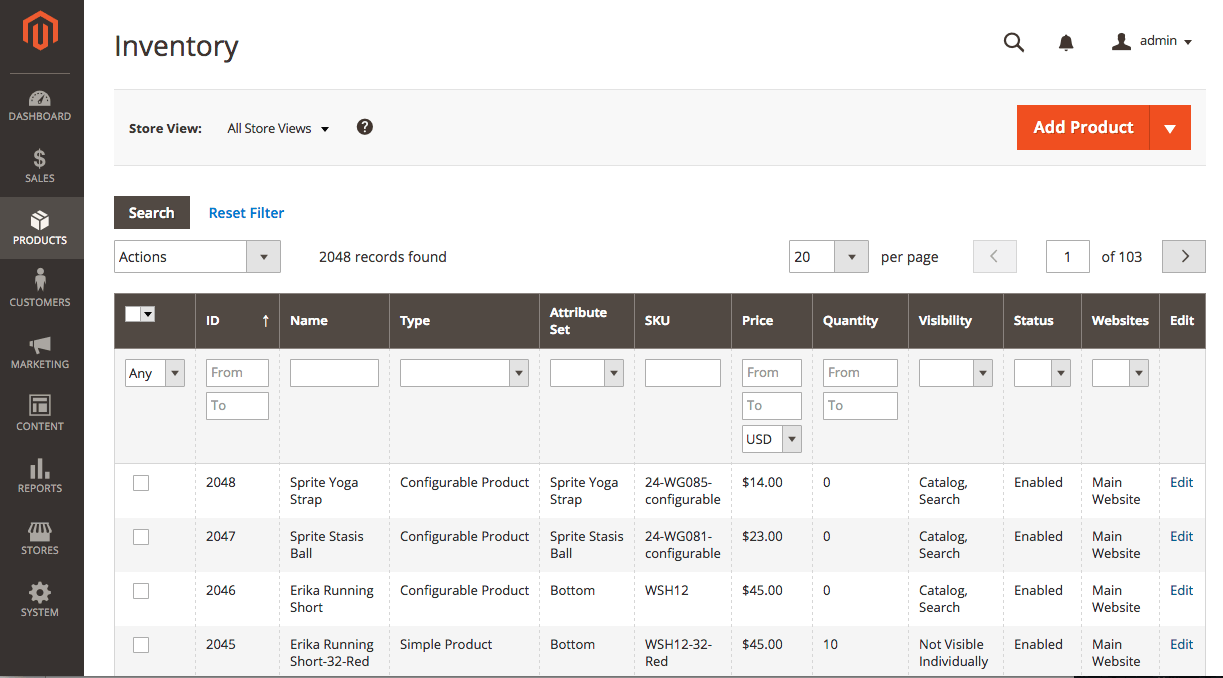
It’s not as pretty (Shopify’s purple and green plant illustrations give it a lot of character), but it puts all the information in one place, with lots of filters, data, and tools. All the information makes it a bit harder to use. Simply put, the learning curve is way steeper. It can take a few months to master the platform, and even then a merchant may still need to google things. It’s built for the developers more than the merchant.
Neither interface is inherently better. Most merchants like Shopify’s dashboard better, but it’s ultimately up to the individual business who’ll be checking on sales and editing listings. Picking the right interface is very important, but entirely a matter of preference. No one should judge the Shopify vs Magento 2 battle on interface alone.
Inventory management
No merchant can sell products with an empty warehouse, so inventory management is crucial. Lucky for eCommerce businesses everywhere, both Magento 2 and Shopify make inventory management easy.
From the Magento dashboard, merchants can look at individual orders, edit the status, and get all the needed info. It’s pretty simple, but effective
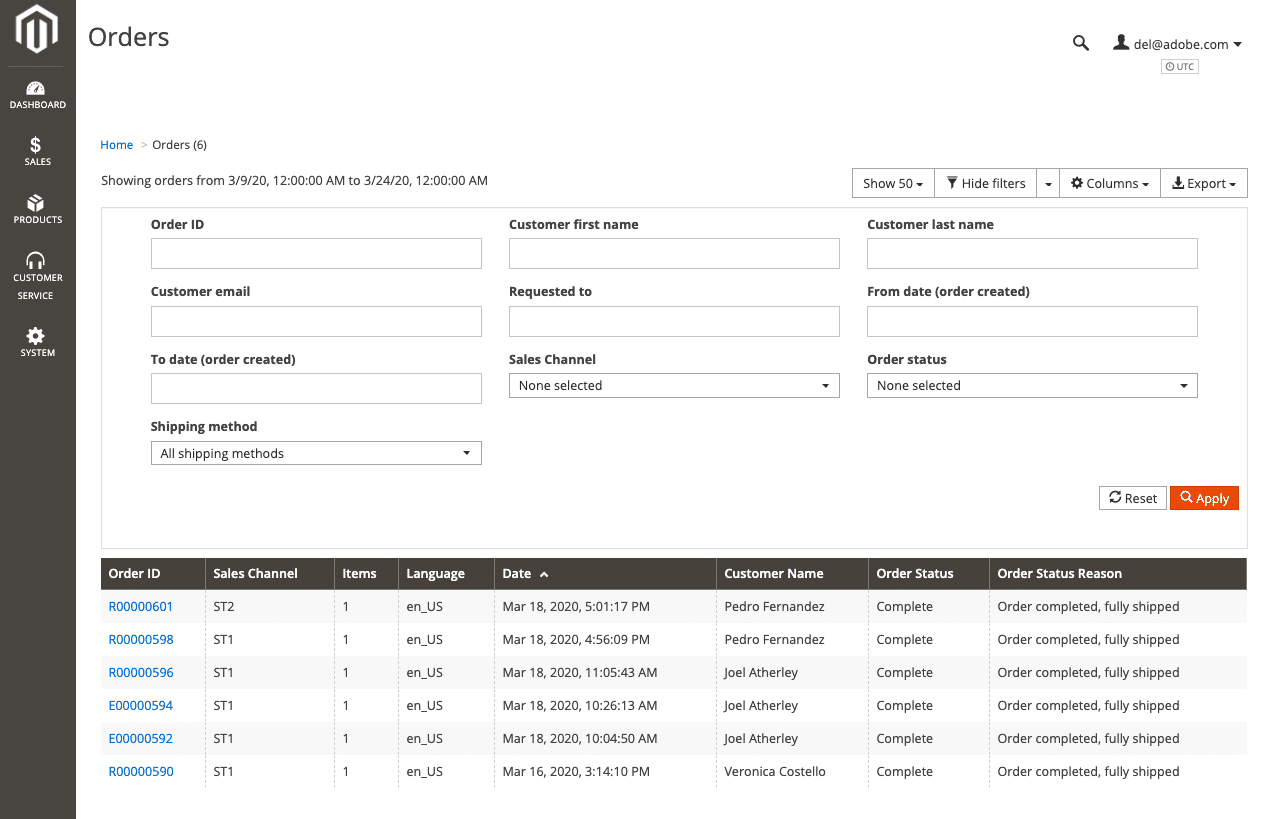
In Shopify, merchants have the same functionality under “customer order management. Because the backend interface is a little more intuitive, tweaks like returns, invoices, and address changes are simpler and faster.
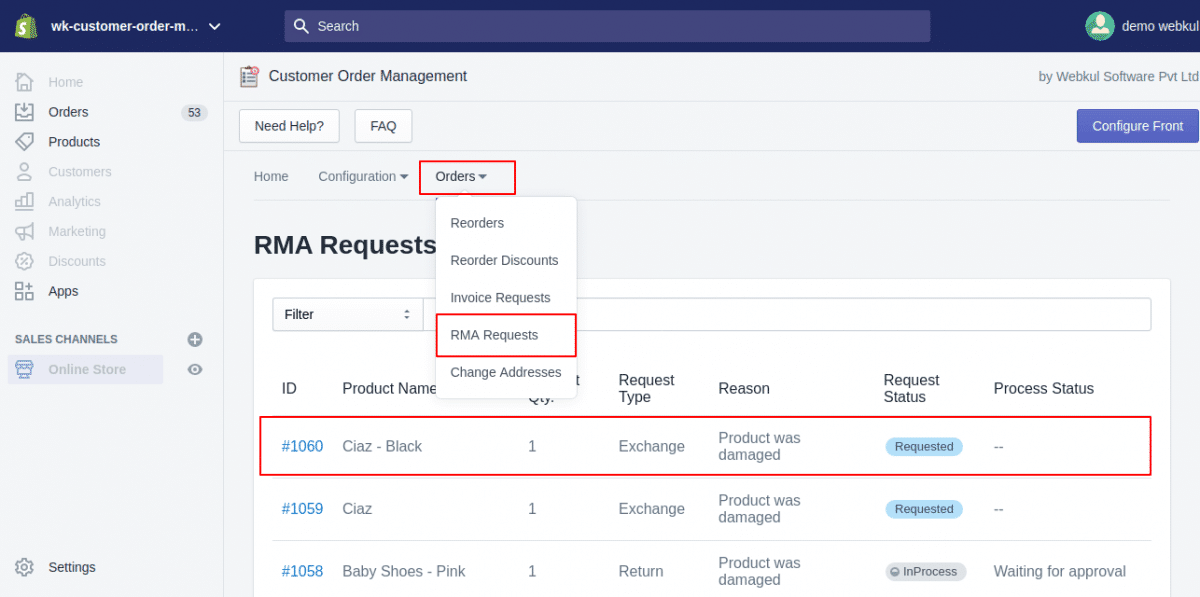
Shopify also makes syncing inventory easy from any feed. The PoS system helps keep brick-and-mortar store sales and online sales in check, and apps like Stock Sync empower sellers to update or add listings anywhere.
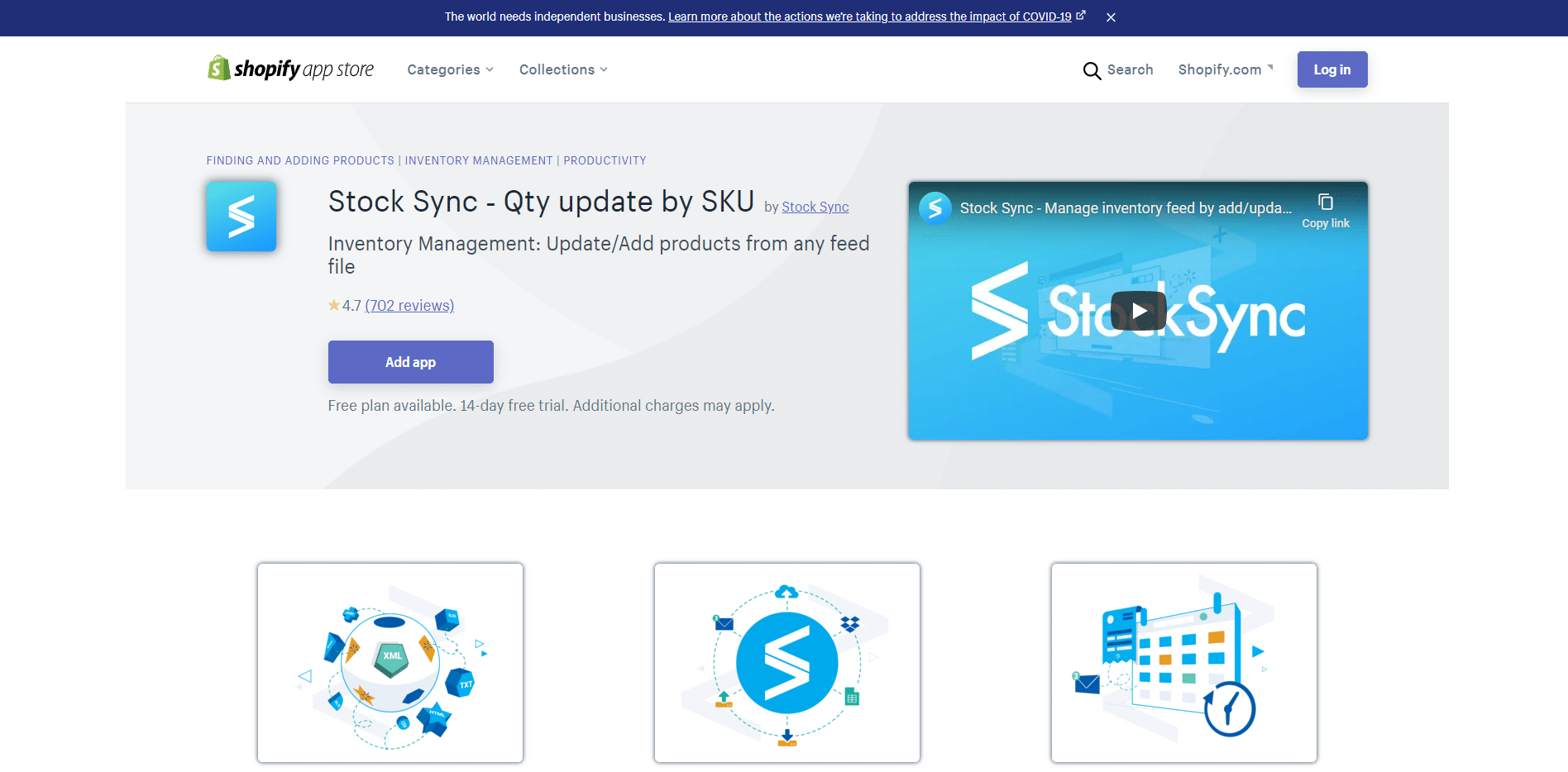
Both platforms have all the features needed to handle inventory and both allow sellers to add lots of useful apps, but Shopify’s easy interface gives it a slight edge.
Hosting
Websites don’t float around in the aether. They have to be hosted on physical machines. Keeping those machines running costs time and money and significantly impacts how the website runs. Thus, it’s important to note that Shopify and Magento 2 are hosted differently.
When sellers pay for Shopify, it comes with pretty great hosting, even if the merchant uses the cheapest plan. It’s guaranteed right there on the Shopify website.

Businesses get super-fast servers, unlimited bandwidth, awesome security, and effortless setup. Plus, a business can buy a custom domain through Shopify, stick with the free one, or add an existing domain. Shopify provides a lot of power and flexibility under the hood.
Unlike Shopify, Magento Open Source (not Magento Commerce, which can get very pricey) is entirely free. However, it doesn’t come with any hosting. Instead, sellers have to find third-party hosting to get the site running.
Depending on what hosting a merchant picks, it could be better or worse off with Shopify. If they opt for GoDaddy or some budget shared hosting, the website won’t run very well. For more on the importance of good hosting, read this guide to managed website hosting. As with all the basics, the better platform depends on how one sets up the site.
Ultimately, neither app beats the other in terms of the basic functionality. Each platform shares the core features, and the better interface is a matter of preference. However, lots of business leaders try to make the decision solely on these factors. Of course, hosting and interface are really important but don’t make any decisions without considering some of the other features.
Shopify vs Magento 2: Features
Shopify and Magento 2 have roughly the same features, but Shopify provides a much more service-oriented approach. That means each seller gets more bang for their buck. Shopify wins on features, once and for all ending the Shopify Vs Magento argument. Here’s what Shopify excels at.
Themes
Themes define the look and feel of the website, and Shopify wins in this department.
For people trying to build a website as fast as possible, Shopify offers lots of free, simple, and elegant themes that make your products pop. Their express theme balances good design and speed-to-market, making it an excellent choice for beginners.

The Magento equivalent, Magento Absolute, is . . . not as good. It looks like a 90’s brochure.

To get something of Shopify’s quality, merchants have to spend a solid chunk of money. Pearl, for instance, looks pretty good.

However, for a similar price, one could get a much nicer Shopify theme, like Prestige, or something more on-brand.

And don’t forget that these are all basic templates, not the good stuff. Editing the themes is super important, too.
Shopify themes are much easier to edit than Magento themes. Magento requires code, unless businesses pay a ton of money for the premium version. However, even the most basic version of Shopify allows merchants to edit pages with an easy-to-use theme editor.
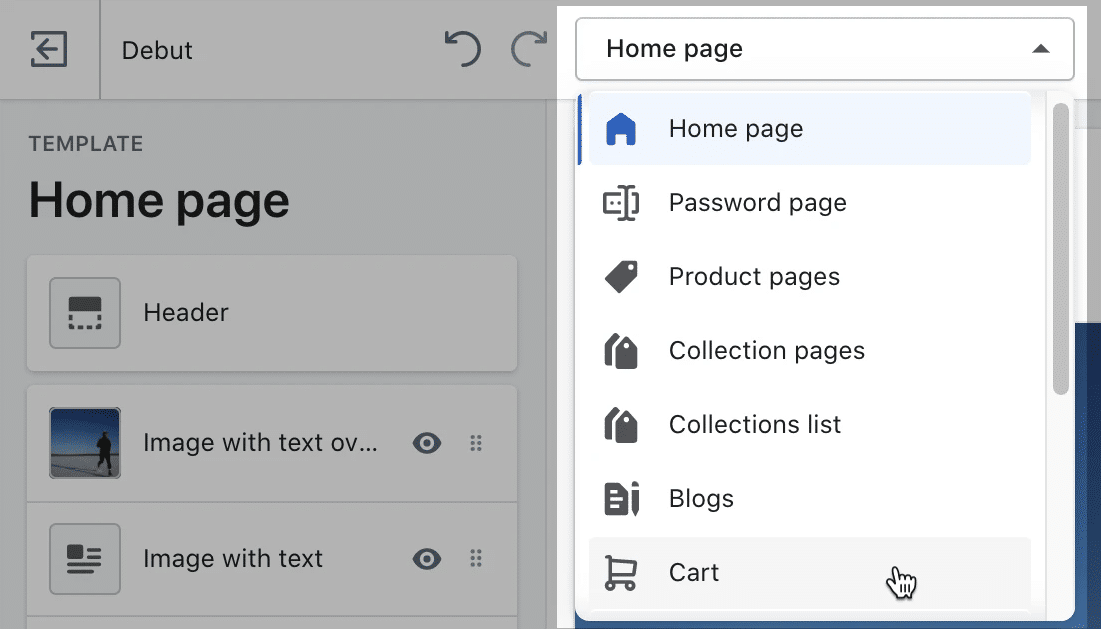
Businesses don’t lose the power of code with Shopify, either. If they’d prefer to get their hands dirty, businesses can edit the code themselves or hire a developer to do it for them.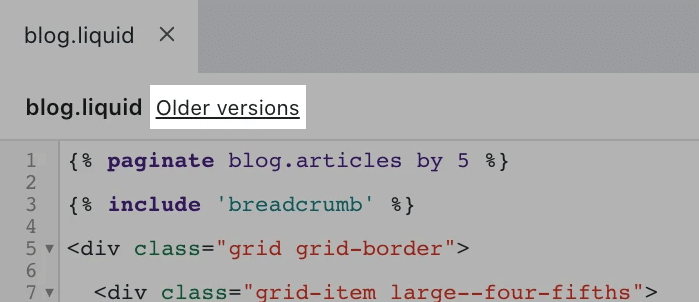
Yes, Shopify uses Liquid code, which can be tricky, but there’s lots of amazing documentation, and making small edits in the code is easy.
So while Magento 2 only really lets merchants make edits in the code, Shopify gives them the freedom to do either with better material to start with.
What really makes Shopify shine is how easy it is to start. New merchants can make a really good website in minutes with a basic drag-and-drop theme. Then, once they’ve made some money, they can upgrade to a paid template. Once the business is really booming, the merchant can hire a developer to make an entirely custom theme. Shopify puts the merchant first at every step of the process, yielding a much better look and feel than Magento.
Shopify themes are so much better than Magento themes that even Magento 2 is losing users fast. Clearly, Shopify is the winner in this category.
Amazon cross-listing
Most lists leave out Amazon compatibility since it isn’t a big feature. But after over a decade in the eCommerce website business, we know how important Amazon is to your business.
Of course, not all businesses cross-sell on Amazon. And worrying about cross-selling before your eCommerce website is even built is putting the cart before the horse. However, it’s a question that gets asked a lot.
Shopify and Magento don’t come with Amazon built-in, but both have a free app that cross-lists products on Amazon.
Magento’s free app is Amazon Sales Channel. Just edit the listing rules from the Magento dashboard and watch sales soar.
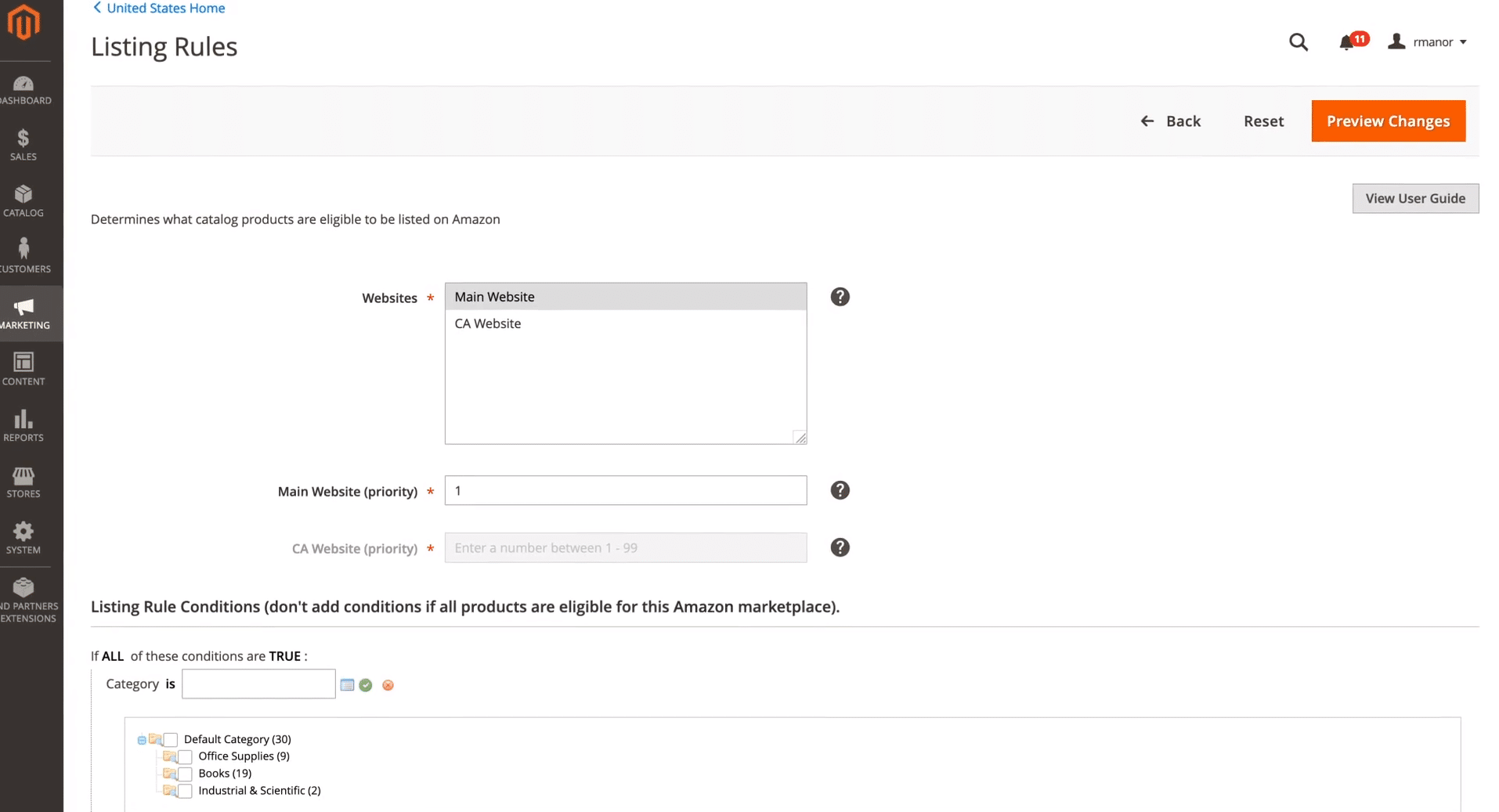
It’s a simple interface, but it gets the job done.
Unfortunately, this extension isn’t without its issues. The most obvious issue is that merchants still have to go through Amazon Seller Central to manage fees and account details. That takes away some of the convenience of a streamlined inventory, and it pops up in questions and reviews all the time.

The bigger issue isn’t very visible until it’s too late.
Websites needs to tell Amazon how much inventory is left. Otherwise, people will buy products on Amazon that have already been sold on the main website. When sellers can’t deliver the product, their Amazon account will take a major hit in searches and credibility, and no merchant wants that.
Normally, this isn’t too much of an issue. The website just talks to Amazon, right?
Here’s the problem: Adobe manages that “conversation,” meaning Amazon can take up to an hour to update. One of Amazon Sales Channel’s most popular reviews complains about a 2-hour sync!
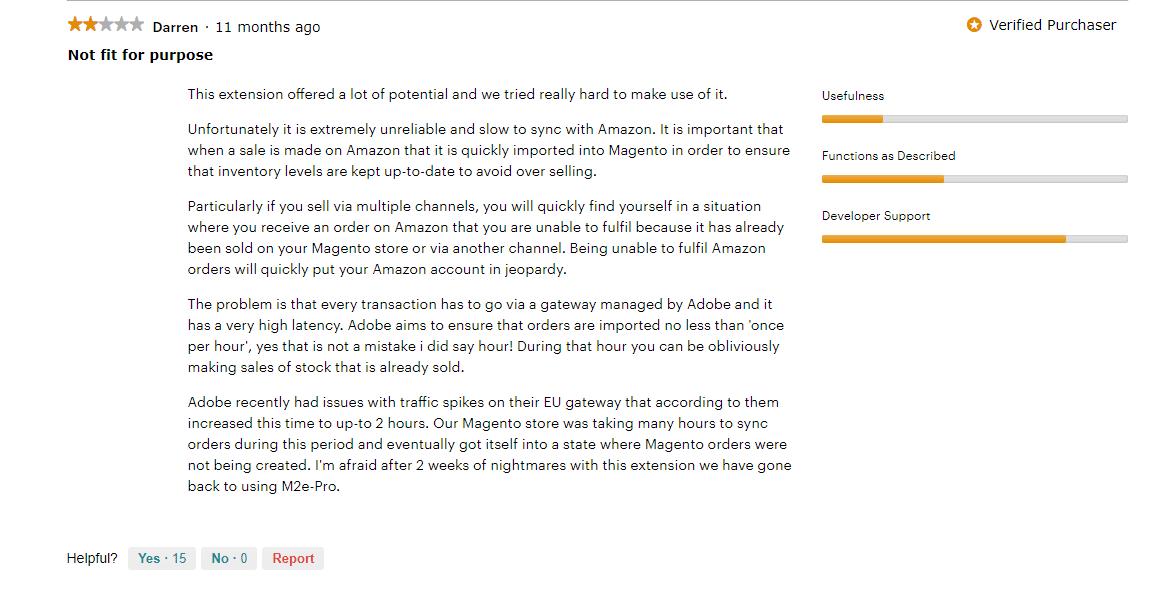
That’s terrifying!
As of eight months ago, communication issues have been pretty much solved. Syncing is pretty much continuous, making double orders much less likely.

Five minutes to sync isn’t perfect, but it’s way better than two hours.
On the other hand, the Shopify Amazon app is easy to use and effective. It adds all the necessary tools right to the interface, allowing sellers to create and edit listings right from Shopify.
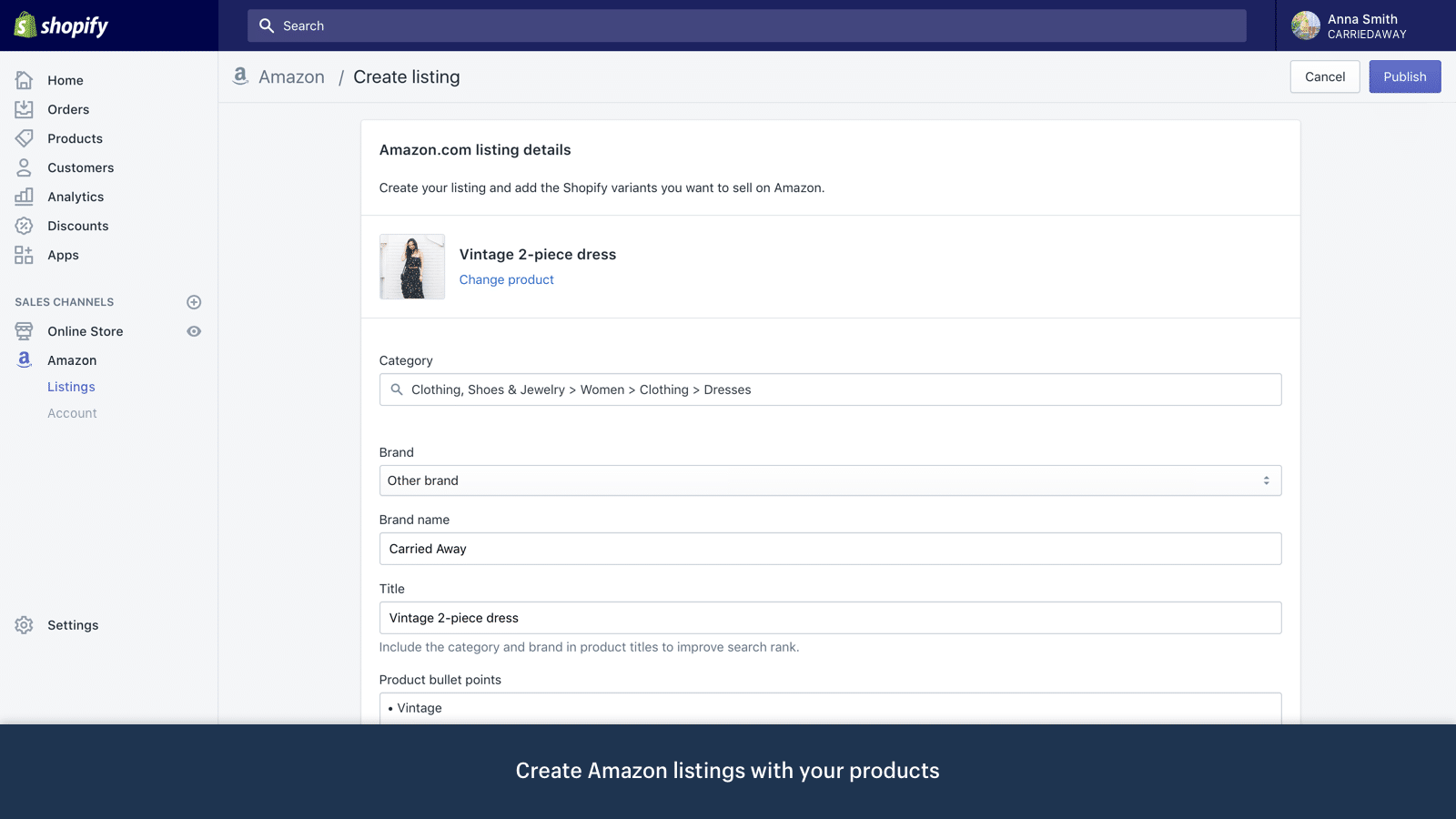
And, sure enough, these listings end up on Amazon, where anyone can see and purchase goods.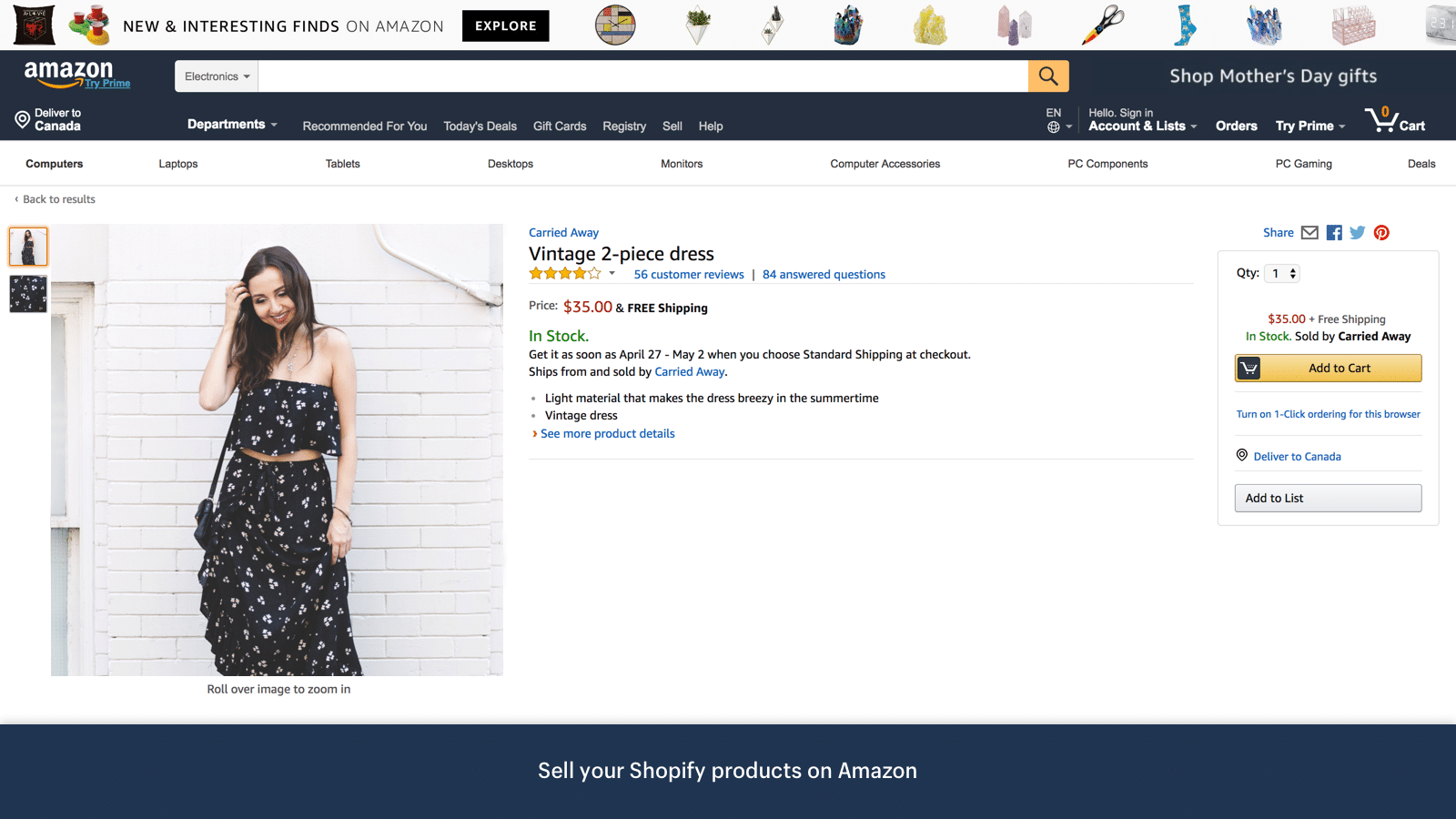
Like Magento’s Amazon extension, Shopify’s Amazon app has a few major issues. The biggest, most glaring issue is that unless it’s been set up exactly right, inventory won’t synch at all. As a result, the app gets flooded with one-star reviews.

However, this issue largely has to do with the setup. If sellers are extra careful with SKUs (stock-keeping units), it should work smooth as silk. That’s why the higher-rated reviews usually bring up SKU matching.

The app isn’t without its issues, though, and if the free apps are unusable, sellers can always use one of the many third-party options available to cross-list items. Or, if cross-listing, in general, is a huge pain, one can add them to Amazon manually.
Of course, some of the most successful merchants don’t sell on Amazon, since the pricing, profits, and fees can get messy. The best bet is to pick a platform first, then worry about cross-selling. Merchants can’t cross-sell well before your eCommerce site is up.
But overall, Shopify’s issues are a lot more solvable than the Magento ones.
Business tools
Amazon isn’t the only app. Shopify and Magento 2 have lots of great tools, and while Magento 2 used to be ahead, they’ve really fallen behind in recent years.
Early on, Magento had better tools. Being open-source, developers could make apps, tools, and themes whenever they wanted.
But ever since Adobe bought Magento in 2018, it’s fizzled out from its former glory. The original Magento app is next to useless — it hasn’t been supported since June 2020. Magento 2 isn’t much better, either. Just take a look at the extension store.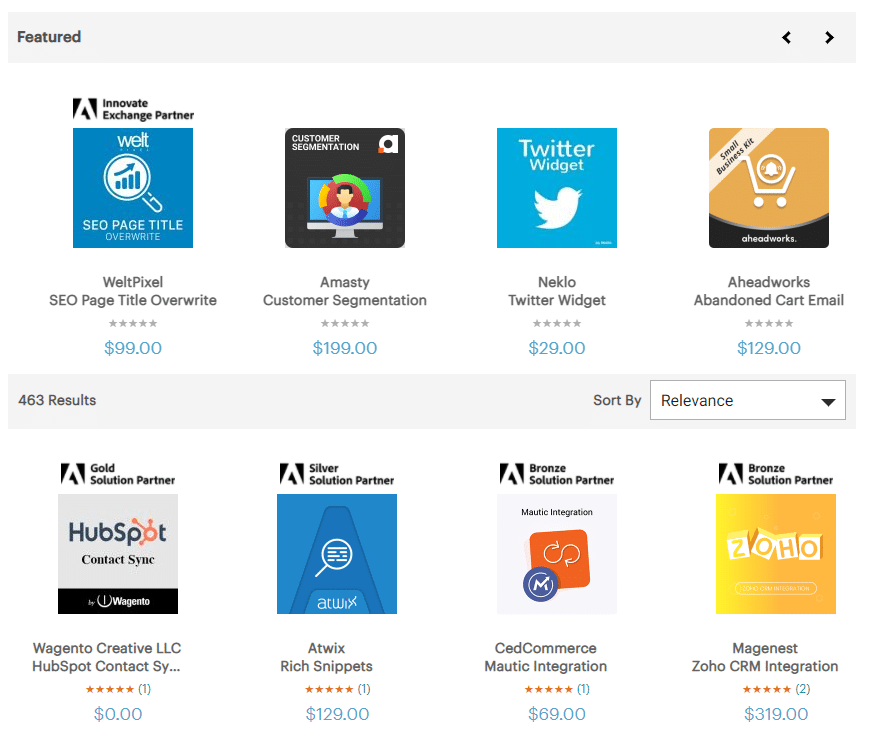
Most of the apps are Adobe-owned, and they’re hardly what they used to be.
But Shopify? They’re really amping up their business tools. Many tools are available on their website.
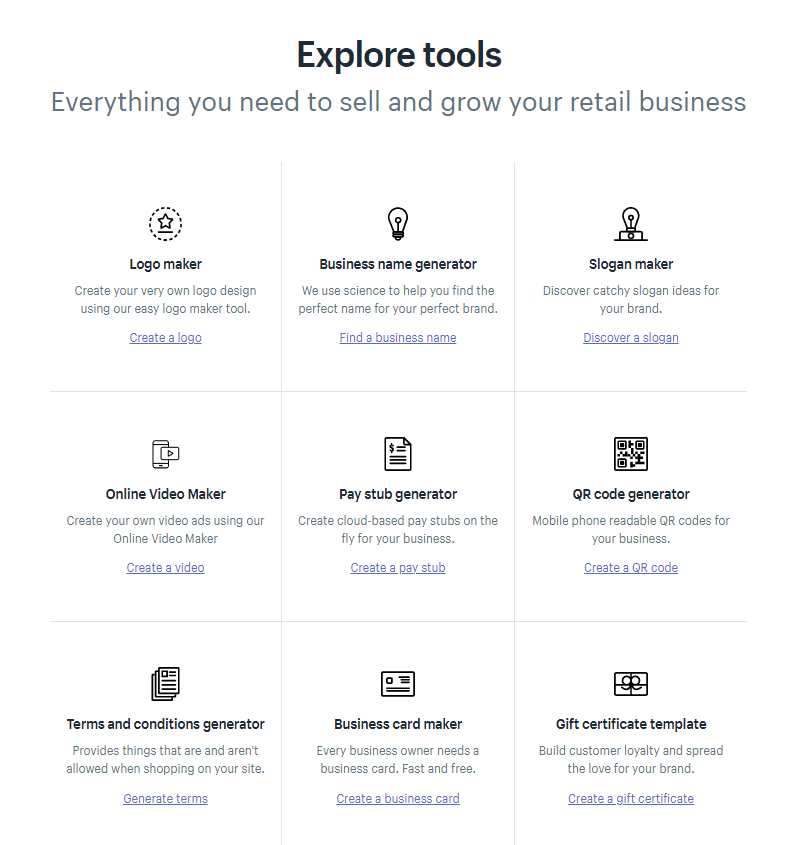
If a merchant needs anything extra, they can buy apps on the app store. Or, they can hire a Shopify Partner to develop custom apps and integrations. So while most guides will say Magento is in the lead, they’re pretty much neck-and-neck. If merchants need an app, it’s probably available. If not, there’s certainly a developer out there who will build it.
Analytics
Decision-making runs on analytics. Thus, the best platform will have great analytics.
At first glance, Magento 2 and Shopify seem to be neck and neck. After all, Magento 2 uses Google Analytics, which is perhaps one of the best analytics options available.
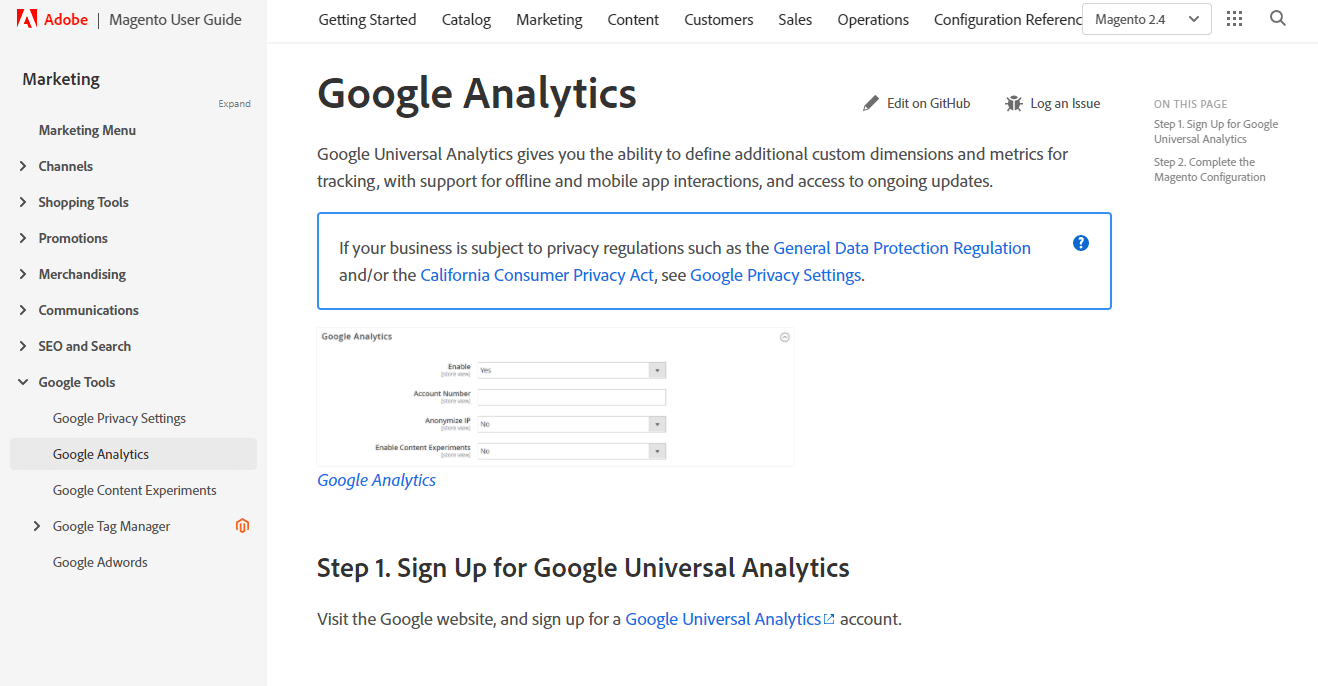
The documentation for setting up Google Analytics with Magento 2 is straightforward and easy to follow. After setup, merchants will have extremely detailed analytics, graphs, and insights at their fingertips.
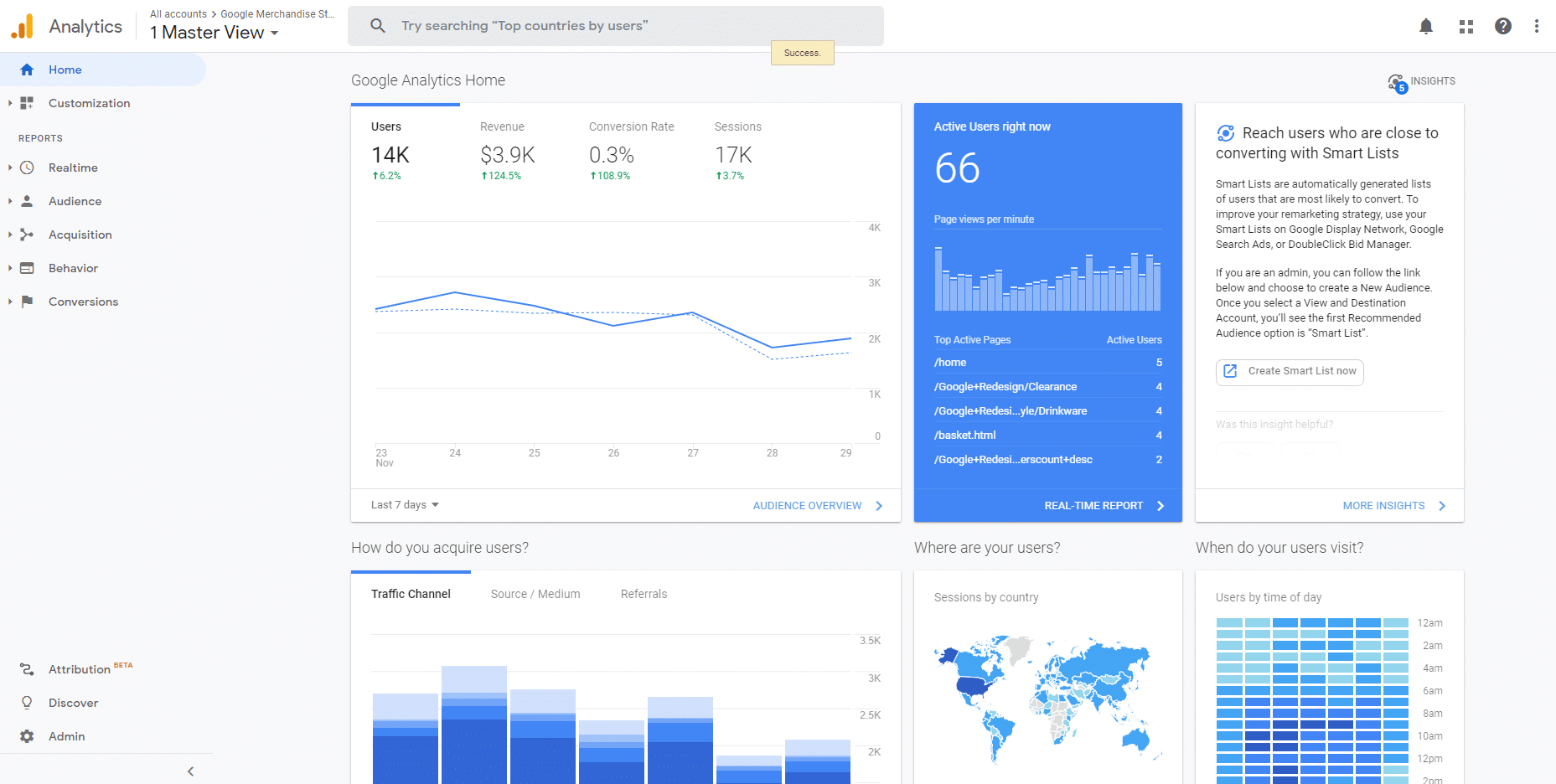
Google Analytics is extremely powerful. On the other hand, Shopify Analytics aren’t quite as good. Of course, they’re powerful, and the interface is very pretty, but many marketers prefer Google.
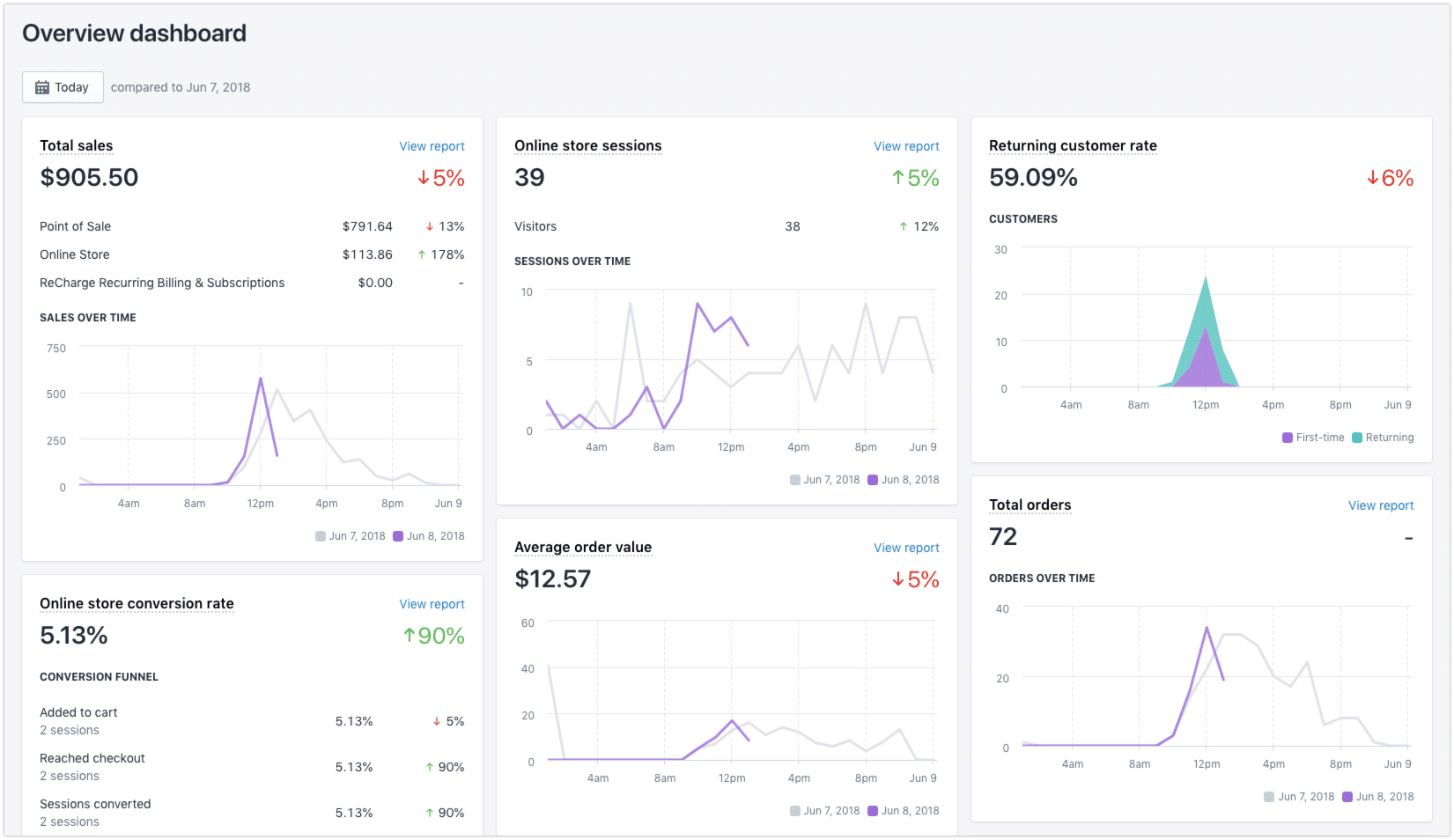
But wait! Magento 2 still doesn’t win because Shopify supports Google Analytics, too. The setup guide is extremely straightforward and user friendly.
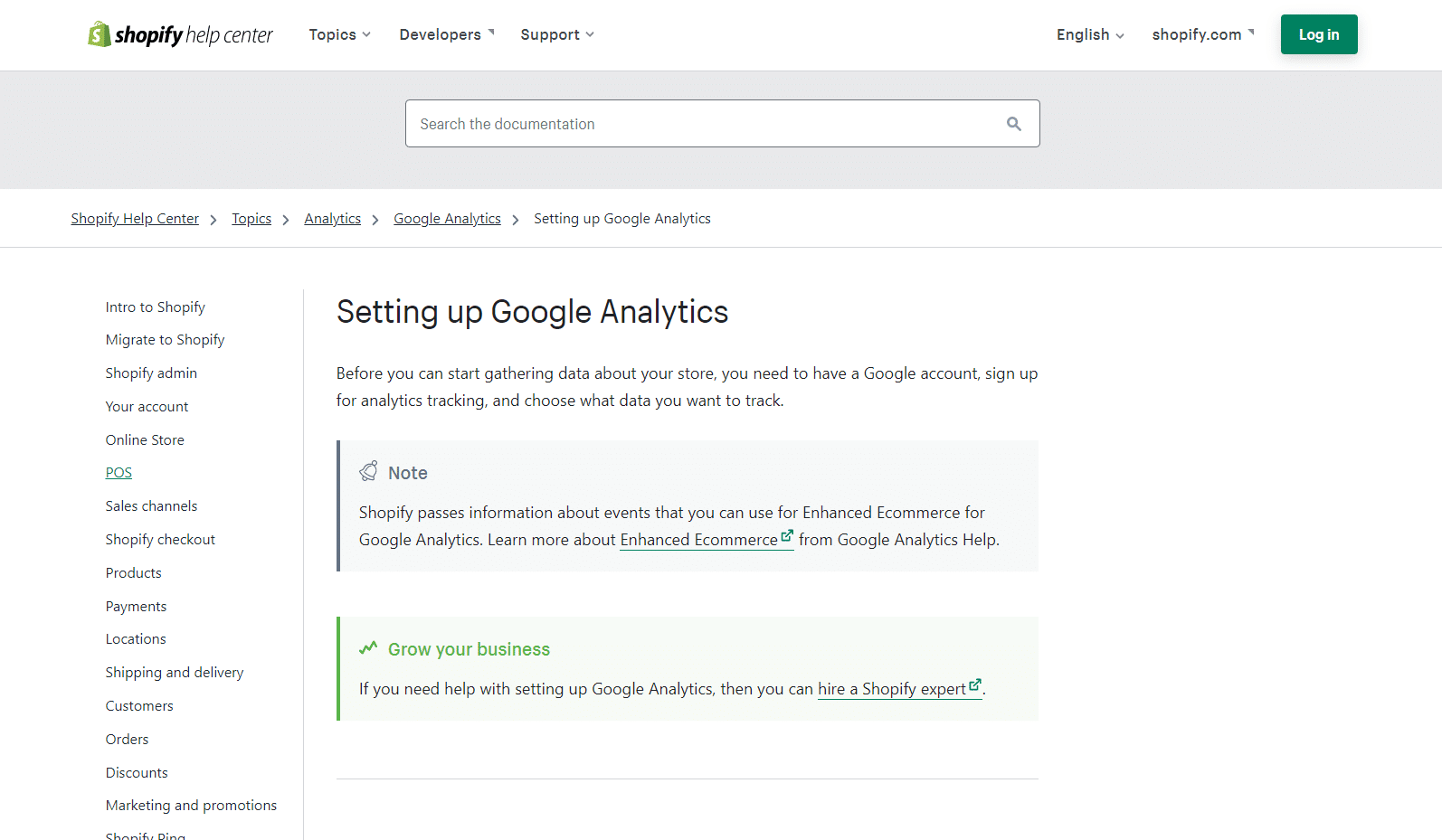
Thus, both platforms have equal analytics capabilities, and arguments that Magento is better at analytics do not stand.
Shopify has all the features of Magento 2 and more. It even has better apps and tools, which is very unusual when the competitor is open source. Magento is simply old and outdated, and that includes Magento 2.
Shopify vs Magento 2: Community
The final measure of any software is its community. The community gives advice, answers questions, and develops third party apps, themes, and more. The community keeps the app alive, as anyone whose used an unpopular piece of software can attest.
Apps and Add-ons
Apps, extensions, and addons make the user experience worthwhile, but they all require lots of work from third party developers.
Magento 2 should have this in the bag, then, right?
In actuality, Magento’s app marketplace is not as competitive as one would expect. It does have a plethora of free and paid apps, but most of the third-party developers have moved over to Shopify because of the higher profit margins. As a result, most of the apps — good and bad — are built by Adobe partners.
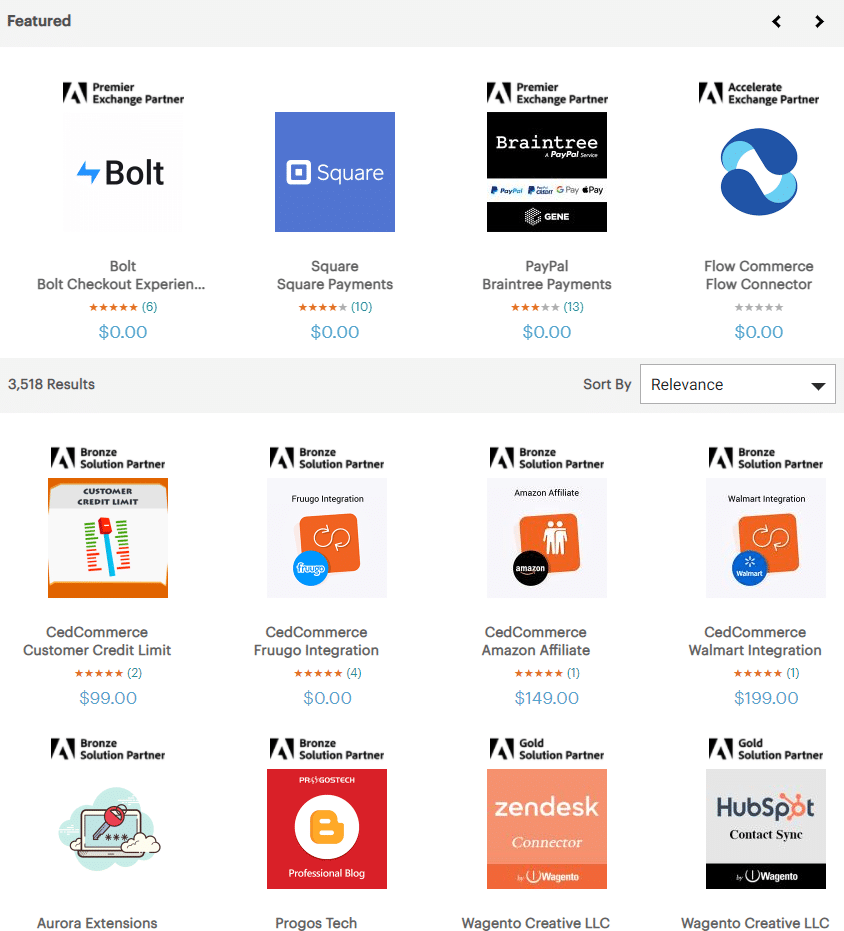
Shopify, on the other hand, has a vibrant and growing app marketplace. The Shopify partner program continues to yield promising results and attract lots of developers to build apps.
Even if Magento 2 has more apps now, the present doesn’t always matter. Magento’s marketplace has been shrinking, while Shopify’s has been growing. It’s only a matter of time before Shopify far surpasses Magento 2, leaving it in the dust.
Customer service
Magento’s customer service doesn’t even come close to Shopify’s Why? Because Shopify is a SaaS company, and Magento 2 is just a software.
Magento 2 does have support, but it’s pretty standard. Customers pull up the contact page, call a number, and wait for a representative. Magento’s funnel is very sales-oriented, and most of the site aims to get you to request a demo.

It’s not bad, but it’s not Shopify.
Shopify’s customer service is some of the best in the business. It even ranks consistently in the top ten best SaaS customer service.
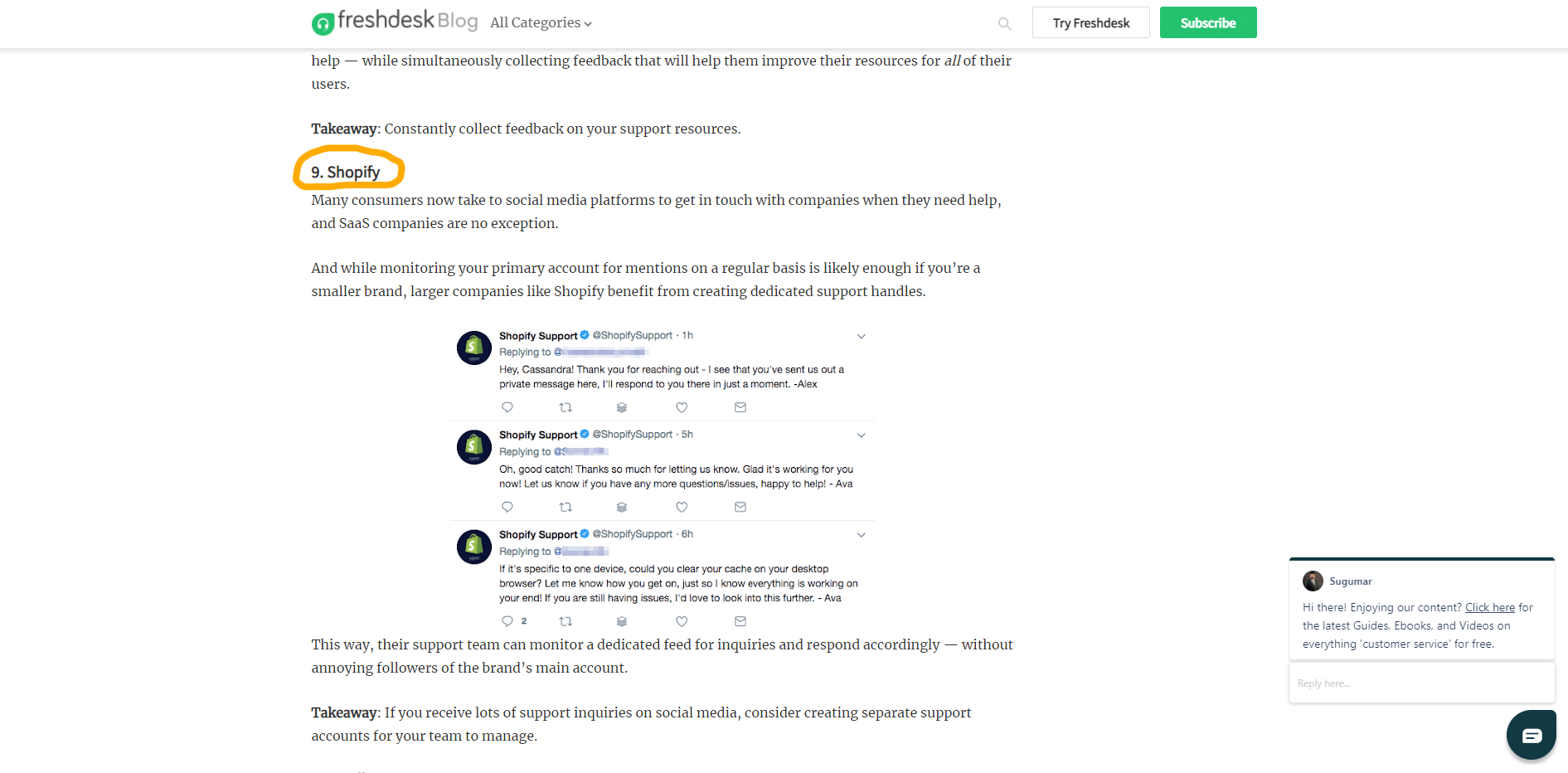
Why? Because they always put service first. They meet customers where the people are: twitter. Have an issue? Tweet it! They’ll respond shortly with answers to any relevant question.
So, your payout period is 3 business days. A payout won't appear in your bank account as soon as it's sent, it usually takes between 24-72 hours depending on bank processing times. You can check out our payout guide here: (https://t.co/1qzkf5Voe2) for more info. – Karlie
— Shopify Support (@ShopifySupport) November 30, 2020
Plus, they occasionally tweet some pretty good memes.
Biz owners playlists during BFCM be like… pic.twitter.com/hNNCEvJg7w
— Shopify Support (@ShopifySupport) November 19, 2020
But Magento? Magento support hasn’t been active since 2015.
Get a product’s status for a store https://t.co/TocTEvXCsC
— Magento Support (@magentosupport) March 5, 2015
The social media is emblematic of the platforms as a whole: Shopify engages its customers, while Magento collects dust in the corner.
Community
Magento is dying. Disagree? Look at the usage statistics. The numbers climb through 2018, then drop off.
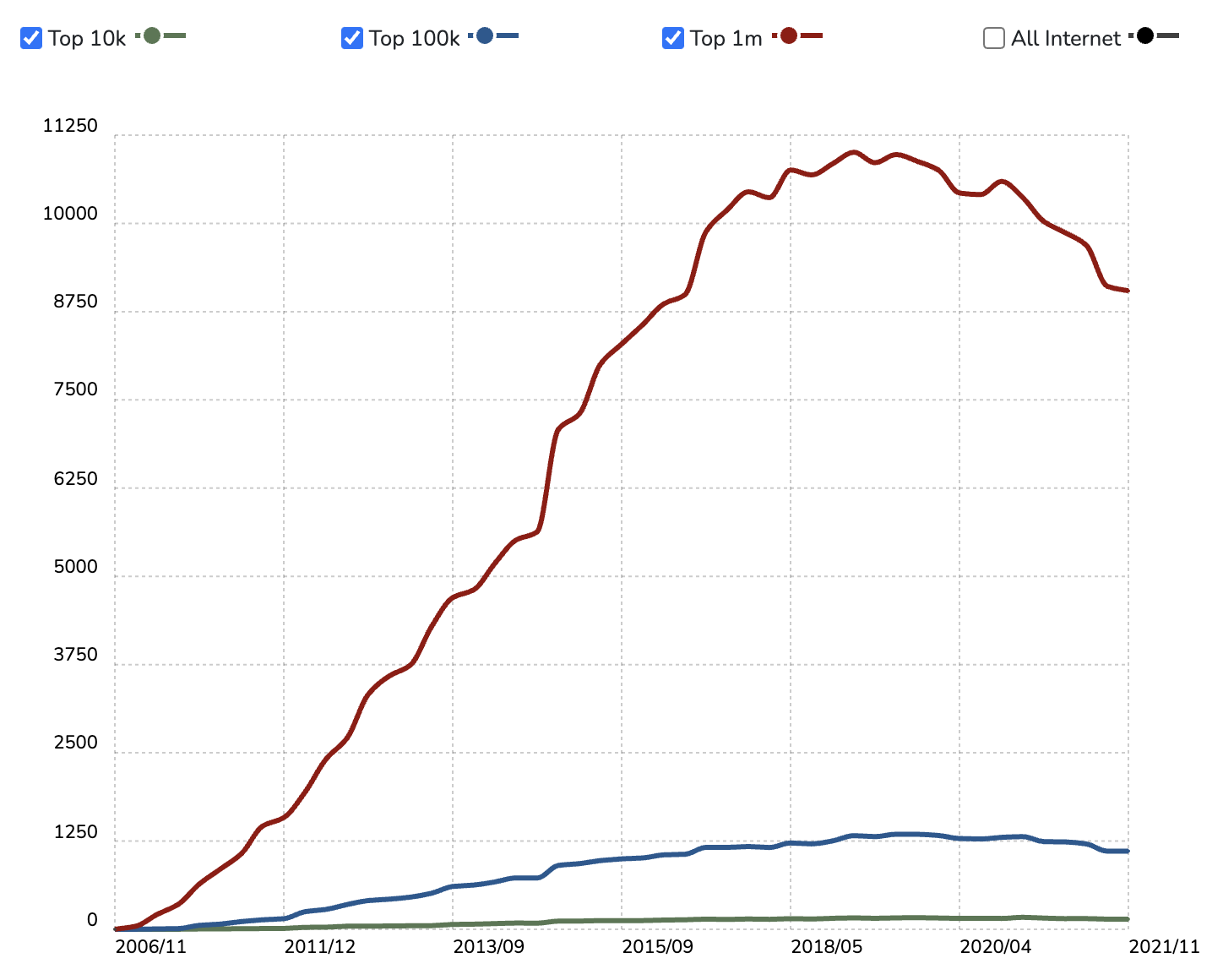
Magento 2 peaks at about 11,o00 of the top 1 million websites, and even years after the Adobe team stopped supporting it, many of those legacy users remain. Magento 2 is better in terms of growth rate, but the user base is relatively small. As of late 2021, Magento 2 hasn’t crossed the 7,000-major-website threshhold.
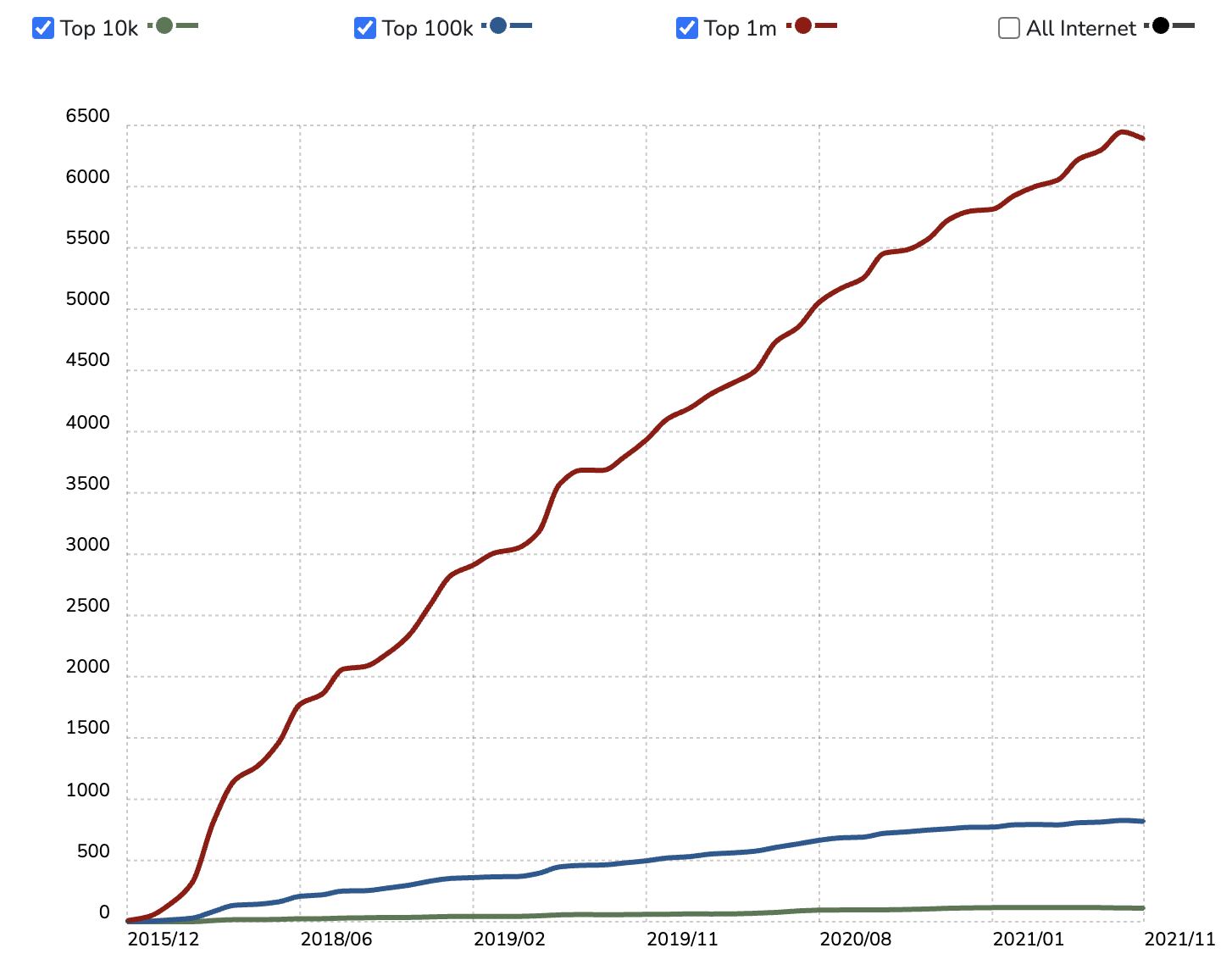
Shopify, on the other hand, hasn’t stopped climbing since 2008. Currently, 25,000 of the top 1 million websites, and 2,500 of the top 100,000 websites use Shopify. In less time, Shopify has surpassed both Magento and Magento 2 in usage.
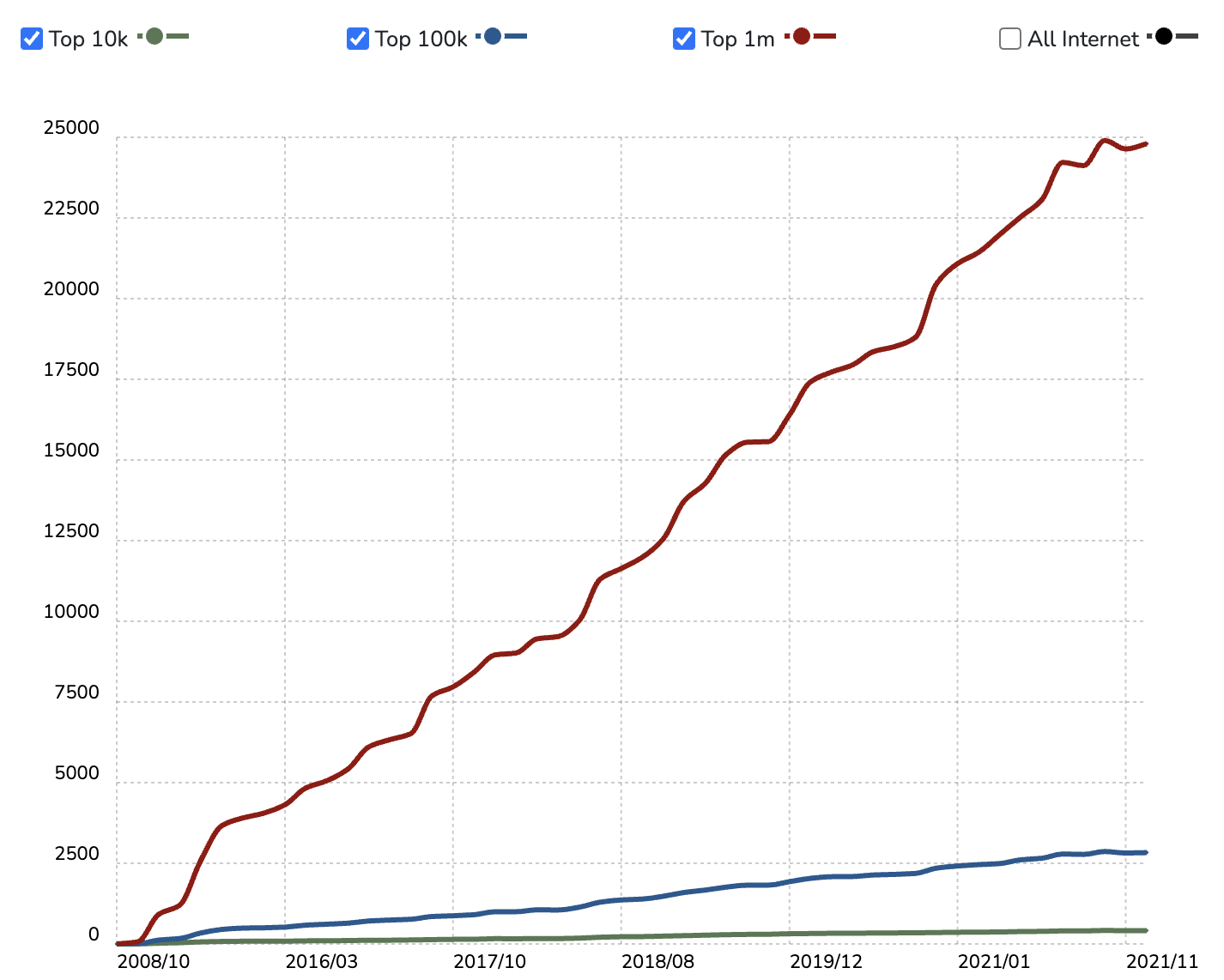
Every time Shopify climbs, Magento falls, and this is no coincidence. Magento’s community is shrinking as more merchants migrate. Shopify has been well ahead since 2018, and it shows no signs of dropping.
Shopify’s community is more active and helpful, too. Just look at their subreddits. Shopify’s subreddit community is an active, growing, collaborative community of merchants trying to grow their businesses.
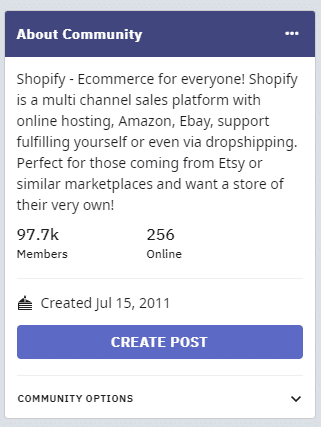
Magento’s subreddit, however, is little more than a graveyard with an unnoticed post every few days.

Magento lacks the vibrant life of the Shopify community, and it’s only shrinking. Want help on your Magento site? Good luck finding it.
Even the documentation isn’t as good. Magento’s documentation is basic, boring, and mostly unhelpful.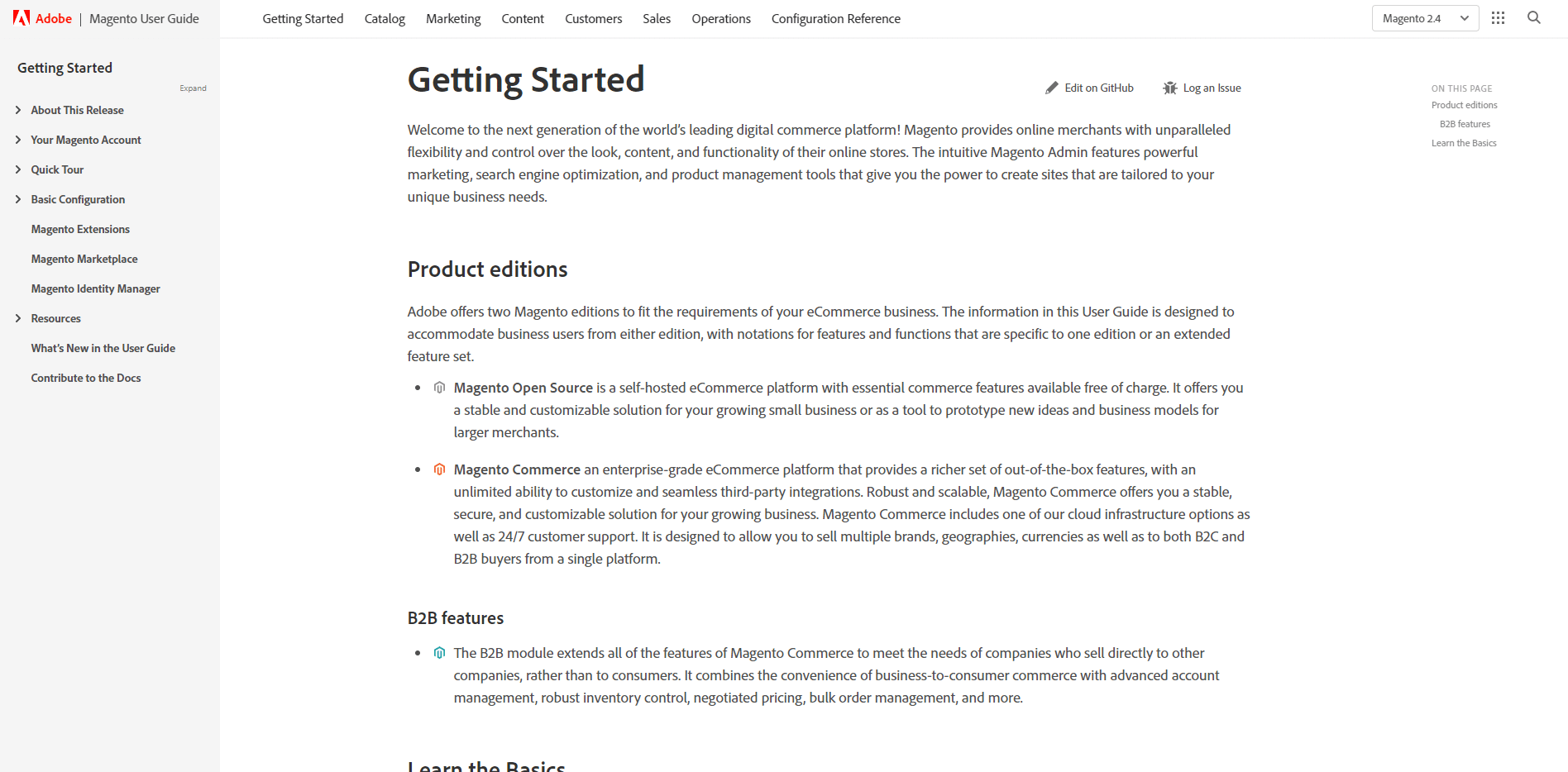
Shopify’s user guide, on the other hand, is regularly updated to be as helpful for the user as possible. They put people first, and it shows.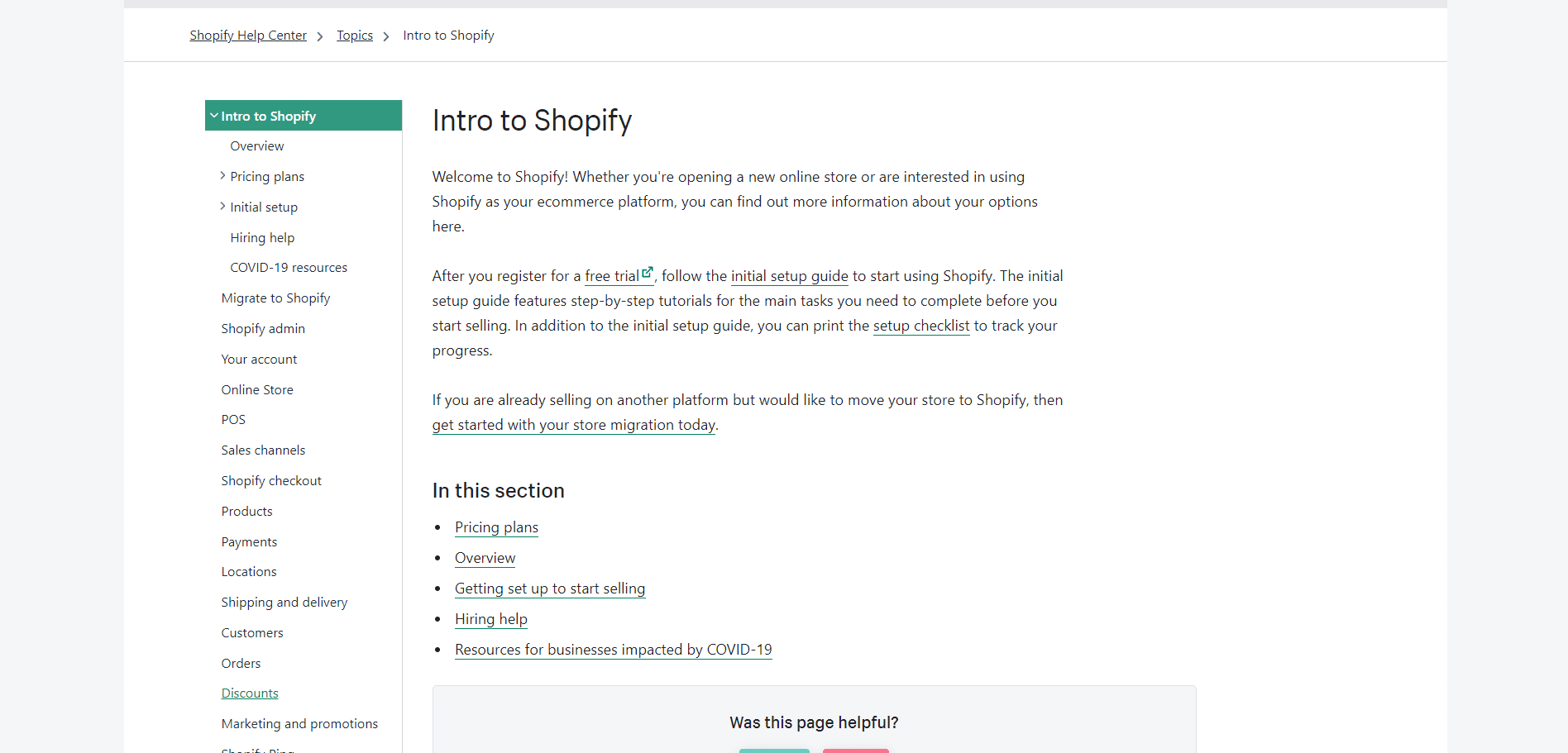
If a merchant needs help with their Shopify business, the documentation will have answers. If they still have questions, the community will help. The same cannot be said of Magento.
Magento is dead, and Shopify buried it.
Shopify vs Magento 2: Pricing
If Shopify is so much better than Magento, it must be more expensive, right?
Well, it depends.
Magento has two versions: Magento Open Source and Magento Commerce (also Magento Cloud, but it’s basically Magento Commerce on AWS). Magento Open Source is free — Shopify is more expensive than zero dollars.
On the other hand, Magento Commerce, is targeted at companies making over one million in revenue. Thus, it’s very expensive — $22,000 per year minimum, to be exact.
Shopify’s standard plans cost more than Magento Open source (obviously–it’s free), but far less than Magento Commerce. The basic plan costs just $29 per month, while the advanced plan costs $299 per month.
Shopify also has a lite plan costing just $9/month and a premium plan costing upwards of $2,000/month, or $24,000/year, roughly the same as Magento Commerce with better versions of the same features (we’ll do a Magento Commerce VS Shopify Plus analysis in the future).
Shopify may not be free, but it supports merchants of every skill level and businesses of every size. More importantly, it saves businesses money in the long term. While Magento Commerce only gives merchants a choice between $0/month and $1600/month, Shopify offers many different tiers with special features and services to help them grow. In fact, Shopify wants businesses to grow.
Shopify Vs Magento 2: Verdict
Overall, Shopify is the better choice for sure. However, every business is different. There are a few scenarios in which one outshines the other.
The quick personal store should run on . . .
. . . Shopify Lite. It’s the easiest, simplest, and most effective eCommerce solution for a quick personal store. Just copy and paste some stuff into the website and get selling.

Small business owners may be tempted to use Magento Open Source because it’s free, but they still need to find hosting and most of the themes are really ugly. Plus, merchants need to know a thing or two about coding, otherwise, they won’t be able to customize it much. $9/month really isn’t that much considering how much a merchant can get, and it’s well worth all the free tools.
The hyper-specific project should run on. . .
. . . Magento. A developer will be making a custom theme, anyway, and they will likely already be well-versed in PHP, so the open-source platform is a quick and easy solution.
However, do be warned that Adobe is shifting focus to Magento Commerce, which leaves Magento Open Source in the dark. It’s already being updated less frequently and may not stand the test of time.
Plus, since so many merchants are switching to Shopify, many developers are learning Liquid to build for Shopify. Even the hyper-specific passion project may work brilliantly on Shopify.
The eCommerce site for an in-person store should run on . . .
. . . Shopify without a doubt. These merchants should pick a plan that fits your budget, requirements, and team size, then set it up with the Point of Sail (POS) system. It will make both online and offline sales easier and more streamlined.
The high-value enterprise should run on . . .
. . . Shopify Plus. As a SaaS platform, all the hard bits are entirely managed, which is really important for a big enterprise. The enterprise is already spending a lot of money, so the extra services should be included.

Magento Commerce may seem cheaper, but the costs add up fast. Since enterprises are dealing with so much revenue, they end up investing far too much in hosting, security, and other techy resources. Those costs add up fast — a huge enterprise can’t just use GoDaddy like with Magento Open Source when this much money is involved. All those resources come bundled with Shopify Plus. Magento just provides the platform.
Most importantly, Shopify rolls out the red carpet for its Plus customers. If an enterprise is paying for the premium service, it deserves to be pampered. Again, Shopify wins the Shopify vs Magento 2 feud.
Making the Switch
Ultimately, the decision depends on the business, but Shopify is the younger, faster, better version of Magento. It’s easier, just as powerful, better looking, and more accurately priced. Aside from a few specific scenarios, Magento just isn’t worth it–especially for the average merchant. Shopify vs Magento 2 is over. Shopify wins.
Sticking to the outdated Magento platform? Begin the switch with the help of a certified Shopify partner today.

